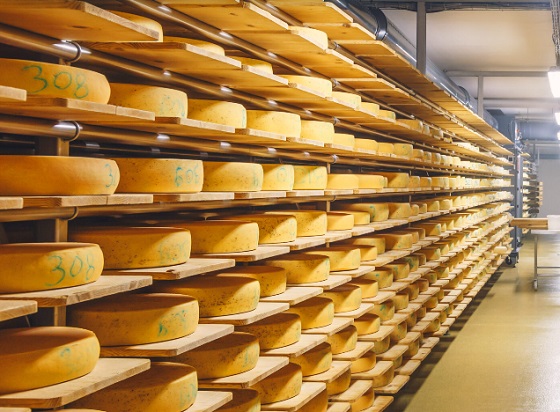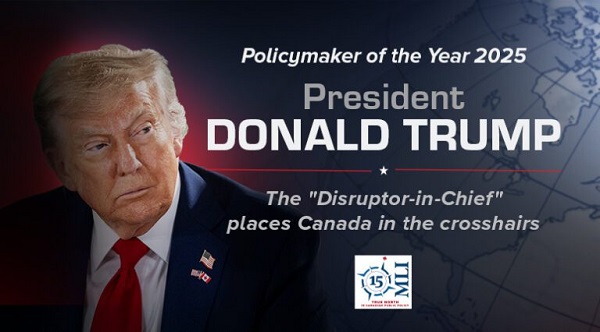Alberta
Notes from Flight 163, the oilsands shuttle from Toronto to Edmonton

Shared with permission from author Stewart Muir
Stewart Muir is a Victoria-based writer who serves as executive director of the Resource Works Society.
On a recent Monday morning, I found myself on Air Canada Flight 163 from Toronto Pearson to Edmonton. As the plane loaded, I began to sense there was something not so regular about the passengers boarding the Airbus 320 for a regularly scheduled flight.
Unlike those I more typically see on my flights, nobody was in flip-flops or golf wear, or fussing with oversized or unnecessary luggage. This was a mix mostly without the easy-to-spot snowbirds, students, and first-time fliers.
The travellers this day were mostly middle-aged men, fit-looking and dressed Mark’s Work Wearhouse casual. There were some women too, and like the men they moved with familiar ease through the cabin lugging full but neatly packed backpacks or duffels. Many carried a preferred travel distraction in hand, ready for a few hours of Netflix or sudoku. I could hear the distinctive accents of the Maritimes and Quebec, and the more familiar central Canadian English, as they found their places the way transit riders enter a subway car.
It was rapidly apparent that I was witnessing a commuter routine, one not meaningfully different than the suit-filled shuttles carrying day-tripping lawyers, accountants, pharma reps, engineers and lobbyists from the same airport that morning to destinations like Ottawa, Montreal, Boston and New York.
In concentrated form, I was witnessing a typical, daily migration of the Canadian oil sands workforce, probably with some LNG and mining thrown in. They were heading to the workplace. Not for a day, but for stretches of a week or two.
Multiply this by dozens or scores, in airports across the country, usually less starkly evident than on this particular flight, and it was just a regular day in Canadian air travel as the massive energy employee base changed shift.
A few hours later, after we unloaded at the other end, I headed for the exit and my Uber. Not so most of my fellow passengers. They continued on their way to connecting flights – to destinations such as Fort McMurray, Grande Prairie, and air services flying direct to some of the big oil sands projects – in time for shift change at the work camps where they were expected.
Statistics could not convey more forcefully than this how the oil & gas economy has a singular and powerful effect on the economy. The large paycheques drawing these men and women to their jobs in the West flowed directly back to their family bank accounts in the GTA and beyond, paying mortgages, grocery bills, taxes and hockey fees.
Flight 163, multiplied many times over, represents what the energy sector, at its most direct and tangible, does for the Canadian economy.
This is what I’m thinking about while surveying a nation that is now deep into an unprecedented social and economic crisis.
Over the coming days and weeks, things that we do will affect how deep and damaging this crisis becomes.
We are seeing Green New Deal advocates pursue the thesis that the coming economic catastrophe is the perfect moment to “transition off fossil fuels”. There are plenty of signs of this thought process – “Hey guess what guys, in one stroke we could meet the Paris Agreement by dropping emissions to 30 per cent below 2005 levels – not by 2030, but by 2021!”
To put this in perspective, consider that the Conference Board of Canada recently estimated that in one of the milder transition scenarios, meeting such targets will cost Canadians $2.2 trillion and require 14 per less use of residential energy, 47 per cent less car travel, eight times the subway use, and 54 per cent less domestic air travel.
Who’s ready to make this change overnight? We couldn’t do it if we wanted to. Think for just a moment about the costs and tradeoffs required, and the difficulty of accomplishing it in the midst of a global health crisis. Clearly it makes no sense at all. Yet Canada might be the only oil-exporting country where accelerating the transition is likely to receive serious acknowledgment in senior decision-making circles.
Even without such measures, Canada is already moving in the right direction: we are a global leader in clean energy, with 80 per cent of the population living in provinces where more than 90 per cent of electricity is drawn from non-fossil fuel sources. This alone makes us the envy of the world. The prevalence of clean electricity means that wherever it is used in industry, the resulting resource commodity exports can outcompete most other similar products in climate terms, with the bonus that they can allow importing countries to reduce their own emissions.
Mere inattention could do as much damage at this time as a wrong decision. Standing back and watching the domestic oil and gas industry topple will have an effect on citizen wellbeing far in excess of what the collapse of any other industry would bring.
We would be looking at the long-term impairment of Canadian living standards – that is to say a reduction in the value of our jobs, in our quality of life, in our educational opportunities, and in our ability to help other countries while continuing as a net positive influence on the world.
The fossil fuel industry – “it is how we earn our living”
It’s hard to describe how important the energy industry is to Canada. Let me try.
Andy Calitz, the former CEO of LNG Canada who performed the herculean task of achieving a positive final investment decision (FID) for the project before moving on to his next challenge, provided a memorable image when he spoke at a small dinner of diplomats and academics I attended not long after the FID.
When the first shipload of liquefied natural gas departs from Kitimat in a few years’ time, he said, that cargo would be worth $100 million – a staggering sum. (I’ve run this figure past a couple of experienced heads in the energy field, and nobody has scoffed at it.)
In Vancouver, we go giddy each spring at the thought of cruise ship season, which last year saw 290 sailings out of the port. If, as is commonly said, one of those sailings means $1 million injected into the local economy, how does that compare with LNG?
Back of envelope math says that a single year of LNG Canada operations, with its promised traffic of one ship in and one ship out every day, will have the impact of one century of the Vancouver cruise industry. I’m not knocking the cruise industry, it’s important and we need it. But let that comparison sink in.
Here’s another one.
Back in 2017, I calculated that natural gas investments in British Columbia that year were on a scale that equated to building the behemoth Wynn hotel in Las Vegas (4,750 rooms over 215 acres) in the Vancouver area, along with a special SkyTrain extension to serve it. ( Natural gas is back: British Columbia drilling surge is behind $5+ billion in 2017 investment )
Never mind that no investor has ever come forward with such a bold plan for a new resort anywhere in Canada. And it’s actually pretty fortunate that we got the energy infrastructure rather than the casino, given the prospects for tourism in 2020.
Economist Patricia Mohr recently pointed out that Canada is “a trading nation and an ‘energy specialist’ — it is how we earn our living.” Crude oil, all by itself, generated net exports of $62 billion in 2019, up from $57.5 billion in 2018 — far above any other export category.
As Ms. Mohr stated, oil exports come in handy given that we habitually run large deficits in other areas including motor vehicles and parts, machinery, electronic equipment, and consumer goods.
During the COVID-19 crisis, it’s obvious we cannot go without lifesaving medical necessities. Unlike our abundant oil, producing them isn’t a great strength. Canada must import billions’ worth of these goods every year. If you isolate just three medical categories – vaccines, medical apparatus and breathing aids – the numbers show clearly that our own ability to manufacture these items is very limited, even as consumption grows year after year.

The current global crisis has already brought a plummeting Canadian dollar, which in turn makes the imported goods that we rely on more costly. Exports that we can sell for U.S. dollars will offset this, but only if we have products to sell and markets ready to buy them. We need to preserve the ability to produce more as more income is needed, while at the same time figuring in the unfortunate reality that many of the things we export are themselves falling in price, so that higher production volumes are required just to stay in place.
The resource economy actually turns out – despite its detractors – to be both flexible and durable as a source of national well-being. Markets for some of the commodities we produce can be expanded at will, something that cannot be said of iPhones, beach umbrellas or BMWs.
Right now in Russia, the government is starting to realize it might not have been such a good idea to enter into an oil price war with Saudi Arabia. More and more evidence suggests that for a winner to emerge will require not months but years of effort, and at the end of it the United States oil industry, resented deeply by both Russia and Saudi Arabia, could well come on top anyways.
The most chilling observation, as reported today by the Wall Street Journal, comes from Igor Sechin, head of Russia’s largest oil producer, state-controlled giant Rosneft: “If you give up your market share, you will never get it back.”
There’s a lesson in this for Canada. Those who see an “opportunity” to deliberately give up our oil market share, to encourage a fast pivot into an unknown energy future, are playing recklessly with how we as a country earn our living. If we ratchet down production by letting industry fail, and decide later that it was a mistake to do so, we will not easily be able to retrieve our market share. That’s a frightening thought. Worse still, killing off the industry will make Canadians more dependent on imported oil, which will have to be paid for using a weakened loonie.
Doing what’s necessary
In 2018, the federal government announced an export diversification strategy that would increase Canada’s overseas exports by 50 per cent by 2025. Even before the combined oil/pandemic crisis, it seemed an unlikely ambition.
“Investing in infrastructure to support trade” was one of the ways Ottawa deemed it could aid this ambitious goal, and credit is due for supporting projects such as the so-far-incomplete Trans Mountain and Coastal GasLink pipelines.
Other forces are holding us back. The Canada Infrastructure Bank, for example, is forbidden from investing its $35 billion of capital in fossil fuel projects, even if those investments could lead to lower energy use and emissions in the oil & gas upstream.
Meanwhile, our national infrastructure minister seems physically incapable of uttering the phrase “energy infrastructure” let alone the p-word (pipelines). Even our minister of natural resources has been placed in the uncomfortable position of carrying out a mandate letter requiring him to making finding alternative employment for oil and gas workers and communities a central task.
Now is the time to save, not strangle, an oil and gas industry that is frantically signalling the need for intervention .
Prime Minister Justin Trudeau’s Quebec lieutenant Pablo Rodriguez yesterday promised Bombardier : “Our government is taking the necessary steps to get you financial help as quickly as possible.” A stock analyst opined that the Canadian and Quebec governments were “likely to offer support if Bombardier gets close to the edge.” (See Globe and Mail story .)
If a single company controlled by a wealthy clan, making luxury jets for billionaires, is to be given this treatment, then there should be no hesitation all in backing the industry that convincingly represents the foundational strength of our entire nation.
Trudeau has always found it difficult to make strong gestures of support to the Canadian oil patch. This time, finding it within himself to say those words of support matters more than ever. There is a very serious risk that Canada’s long term prosperity in both an absolute and a relative sense will be impaired by what occurs in the coming hours, days and weeks. Ahead of us, economic success will only come through determination and political commitment to put people and jobs first.
Stewart Muir is a Victoria-based writer who serves as executive director of the Resource Works Society.
Grow your business with the Daily Oil Bulletin – the trusted source for Canada’s oilpatch.
Canada in talks with the U.S. to avoid troops at the border, says Trudeau
Alberta Energy Regulator names senior Saskatchewan government official as CEO
Alberta
A Christmas wish list for health-care reform

From the Fraser Institute
By Nadeem Esmail and Mackenzie Moir
It’s an exciting time in Canadian health-care policy. But even the slew of new reforms in Alberta only go part of the way to using all the policy tools employed by high performing universal health-care systems.
For 2026, for the sake of Canadian patients, let’s hope Alberta stays the path on changes to how hospitals are paid and allowing some private purchases of health care, and that other provinces start to catch up.
While Alberta’s new reforms were welcome news this year, it’s clear Canada’s health-care system continued to struggle. Canadians were reminded by our annual comparison of health care systems that they pay for one of the developed world’s most expensive universal health-care systems, yet have some of the fewest physicians and hospital beds, while waiting in some of the longest queues.
And speaking of queues, wait times across Canada for non-emergency care reached the second-highest level ever measured at 28.6 weeks from general practitioner referral to actual treatment. That’s more than triple the wait of the early 1990s despite decades of government promises and spending commitments. Other work found that at least 23,746 patients died while waiting for care, and nearly 1.3 million Canadians left our overcrowded emergency rooms without being treated.
At least one province has shown a genuine willingness to do something about these problems.
The Smith government in Alberta announced early in the year that it would move towards paying hospitals per-patient treated as opposed to a fixed annual budget, a policy approach that Quebec has been working on for years. Albertans will also soon be able purchase, at least in a limited way, some diagnostic and surgical services for themselves, which is again already possible in Quebec. Alberta has also gone a step further by allowing physicians to work in both public and private settings.
While controversial in Canada, these approaches simply mirror what is being done in all of the developed world’s top-performing universal health-care systems. Australia, the Netherlands, Germany and Switzerland all pay their hospitals per patient treated, and allow patients the opportunity to purchase care privately if they wish. They all also have better and faster universally accessible health care than Canada’s provinces provide, while spending a little more (Switzerland) or less (Australia, Germany, the Netherlands) than we do.
While these reforms are clearly a step in the right direction, there’s more to be done.
Even if we include Alberta’s reforms, these countries still do some very important things differently.
Critically, all of these countries expect patients to pay a small amount for their universally accessible services. The reasoning is straightforward: we all spend our own money more carefully than we spend someone else’s, and patients will make more informed decisions about when and where it’s best to access the health-care system when they have to pay a little out of pocket.
The evidence around this policy is clear—with appropriate safeguards to protect the very ill and exemptions for lower-income and other vulnerable populations, the demand for outpatient healthcare services falls, reducing delays and freeing up resources for others.
Charging patients even small amounts for care would of course violate the Canada Health Act, but it would also emulate the approach of 100 per cent of the developed world’s top-performing health-care systems. In this case, violating outdated federal policy means better universal health care for Canadians.
These top-performing countries also see the private sector and innovative entrepreneurs as partners in delivering universal health care. A relationship that is far different from the limited individual contracts some provinces have with private clinics and surgical centres to provide care in Canada. In these other countries, even full-service hospitals are operated by private providers. Importantly, partnering with innovative private providers, even hospitals, to deliver universal health care does not violate the Canada Health Act.
So, while Alberta has made strides this past year moving towards the well-established higher performance policy approach followed elsewhere, the Smith government remains at least a couple steps short of truly adopting a more Australian or European approach for health care. And other provinces have yet to even get to where Alberta will soon be.
Let’s hope in 2026 that Alberta keeps moving towards a truly world class universal health-care experience for patients, and that the other provinces catch up.
Alberta
Calgary’s new city council votes to ban foreign flags at government buildings

From LifeSiteNews
It is not yet clear if the flag motion applies to other flags, such as LGBT ones.
Western Canada’s largest city has put in place what amounts to a ban on politically charged flags from flying at city-owned buildings.
“Calgary’s Flag Policy means any country recognized by Canada may have their flag flown at City Hall on their national day,” said Calgary’s new mayor Jeromy Farkas on X last month.
“But national flag-raisings are now creating division. Next week, we’ll move to end national flag-raisings at City Hall to keep this a safe, welcoming space for all.”
The motion to ban foreign flags from flying at government buildings was introduced on December 15 by Calgary councilor Dan McLean and passed by a vote of 8 to 7. He had said the previous policy to allow non-Canadian flags to fly, under former woke mayor Jyoti Gondek, was “source of division within our community.”
“In recent months, this practice has been in use in ways that I’ve seen have inflamed tensions, including instances where flag raisings have been associated with anti-Semitic behavior and messaging,” McLean said during a recent council meeting.
The ban on flag raising came after the Palestinian flag was allowed to be raised at City Hall for the first time.
Farkas, shortly after being elected mayor in the fall of 2025, had promised that he wanted a new flag policy introduced in the city.
It is not yet clear if the flag motion applies to other flags, such as LGBT ones.
Despite Farkas putting forth the motion, as reported by LifeSiteNews he is very much in the pro-LGBT camp. However, he has promised to focus only on non-ideological issues during his term.
McLean urged that City Hall must be a place of “neutrality, unity, and respect” for everyone.
“When City Hall becomes a venue for geopolitical expressions, it places the city in the middle of conflicts that are well beyond our municipal mandates,” he said.
As reported by LifeSiteNews, other jurisdictions in Canada are considering banning non-Canadian flags from flying over public buildings.
Recently a political party in British Columbia, OneBC, introduced legislation to ban non-domestic government flags at public buildings in British Columbia.
Across Canada there has also been an ongoing issue with so-called “Pride” flags being raised at schools and city buildings.
-

 Automotive2 days ago
Automotive2 days agoCanada’s EV gamble is starting to backfire
-

 Agriculture2 days ago
Agriculture2 days agoEnd Supply Management—For the Sake of Canadian Consumers
-

 Alberta2 days ago
Alberta2 days agoAlberta Next Panel calls to reform how Canada works
-

 International17 hours ago
International17 hours agoGeorgia county admits illegally certifying 315k ballots in 2020 presidential election
-

 Alberta14 hours ago
Alberta14 hours agoA Christmas wish list for health-care reform
-

 International1 day ago
International1 day agoWorld-leading biochemist debunks evolutionary theory
-

 Business8 hours ago
Business8 hours agoSome Of The Wackiest Things Featured In Rand Paul’s New Report Alleging $1,639,135,969,608 In Gov’t Waste
-

 Business1 day ago
Business1 day agoThe “Disruptor-in-Chief” places Canada in the crosshairs









